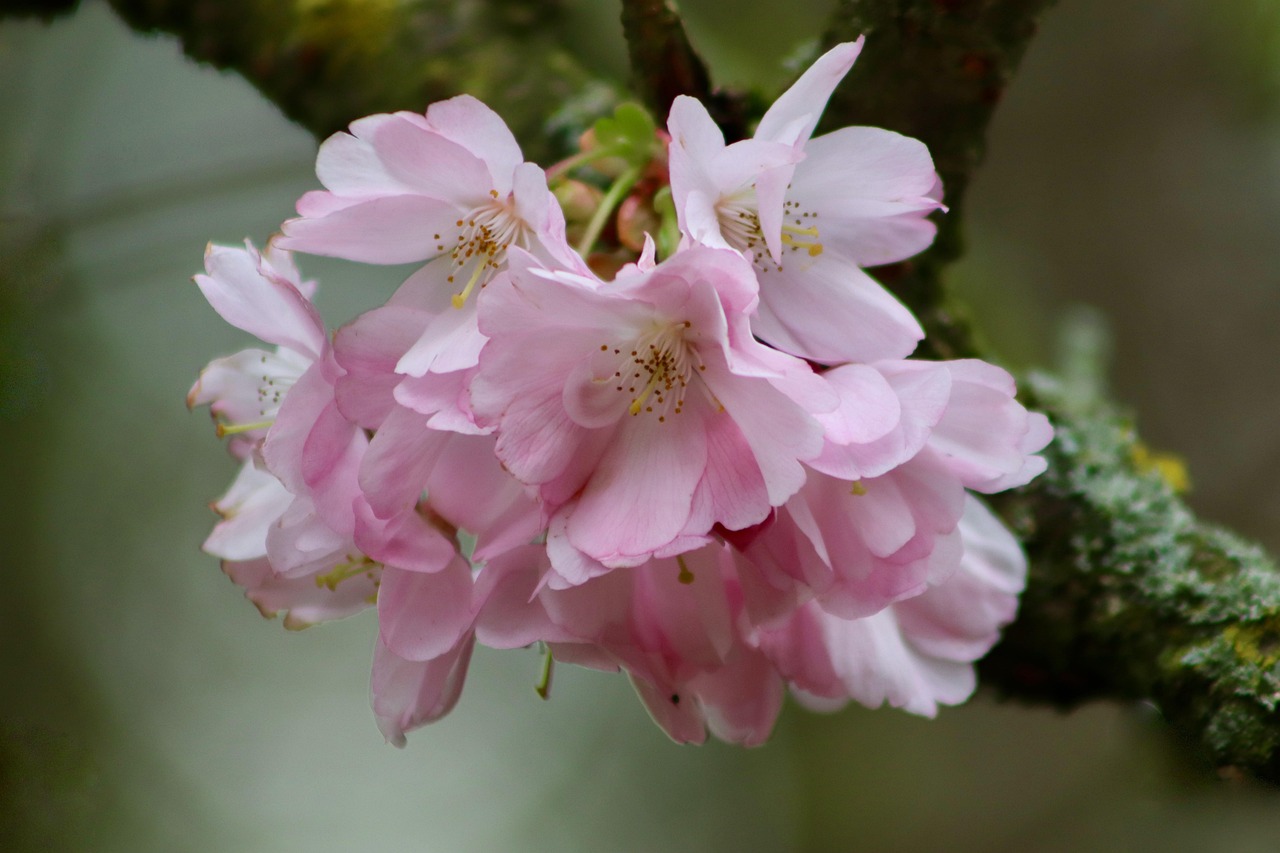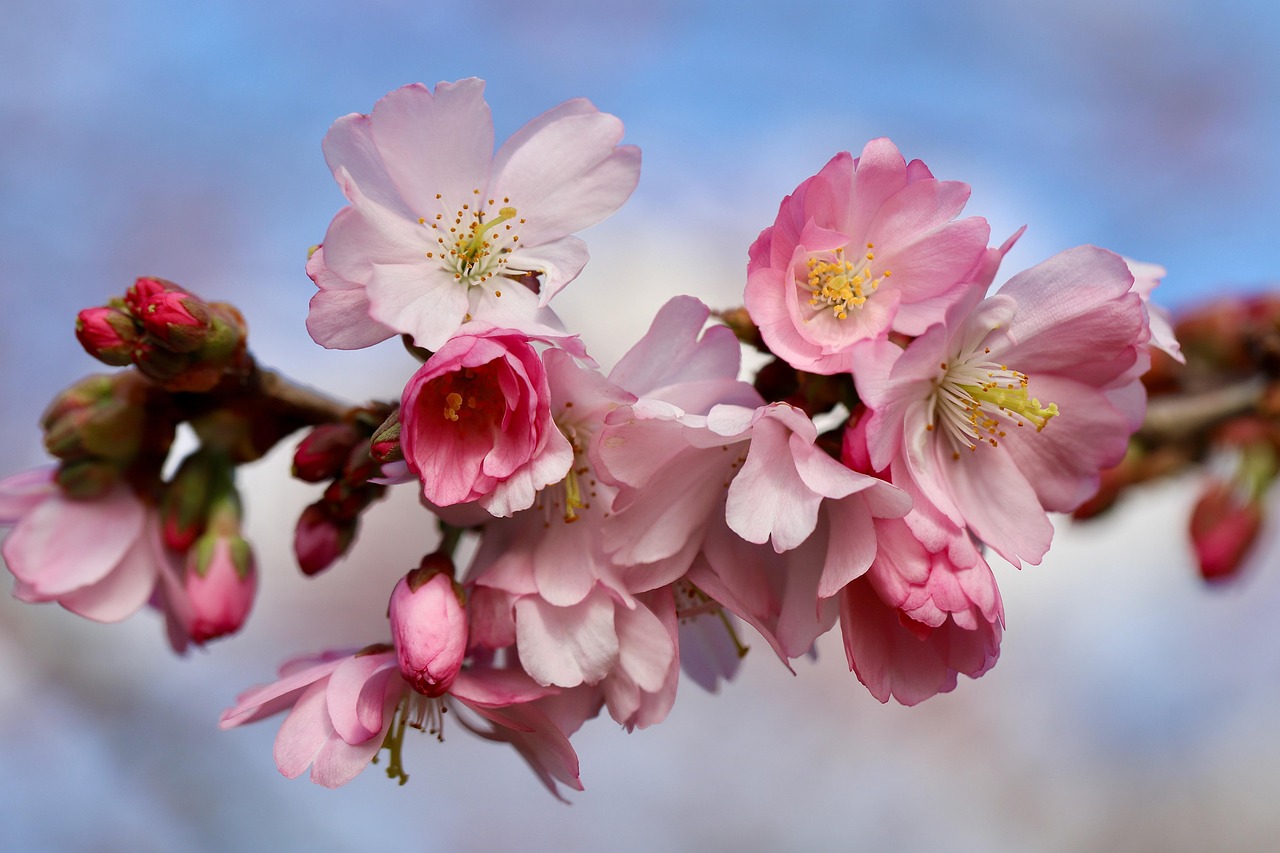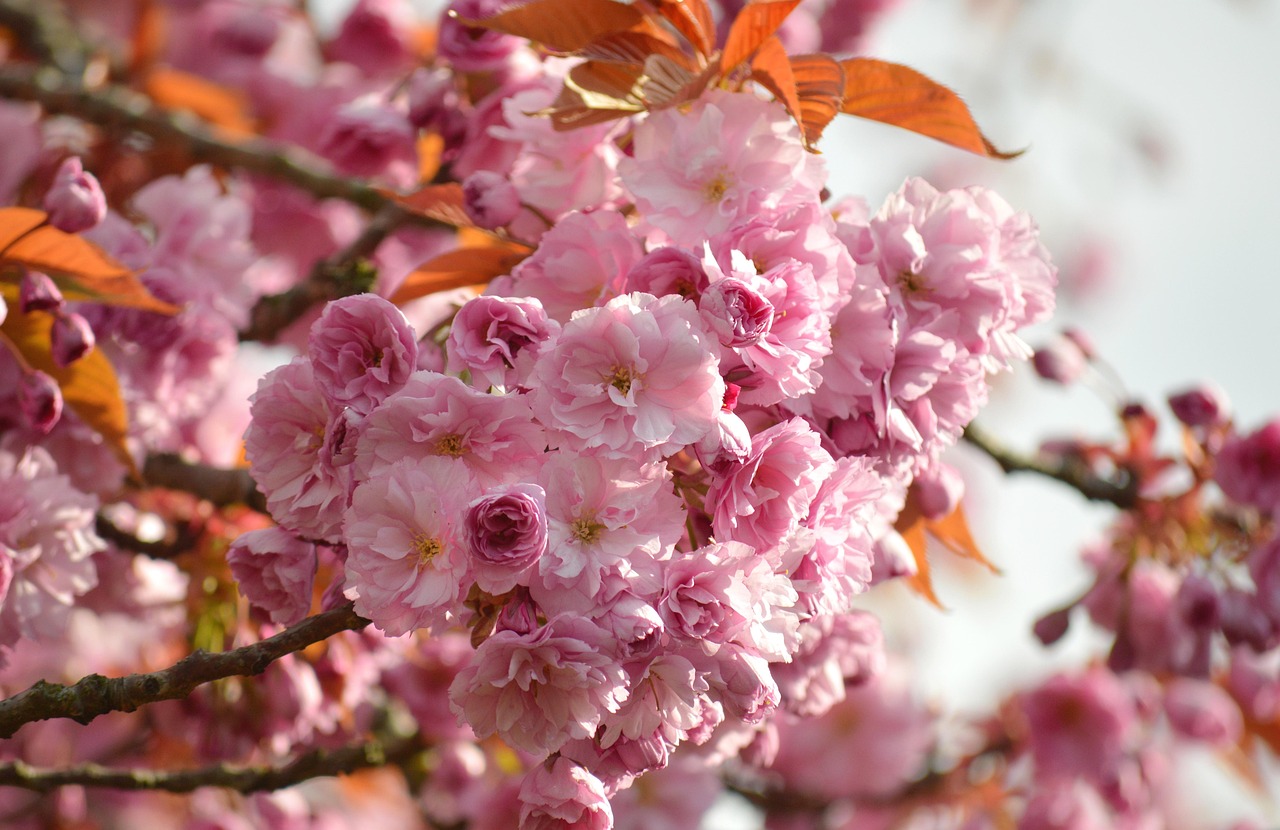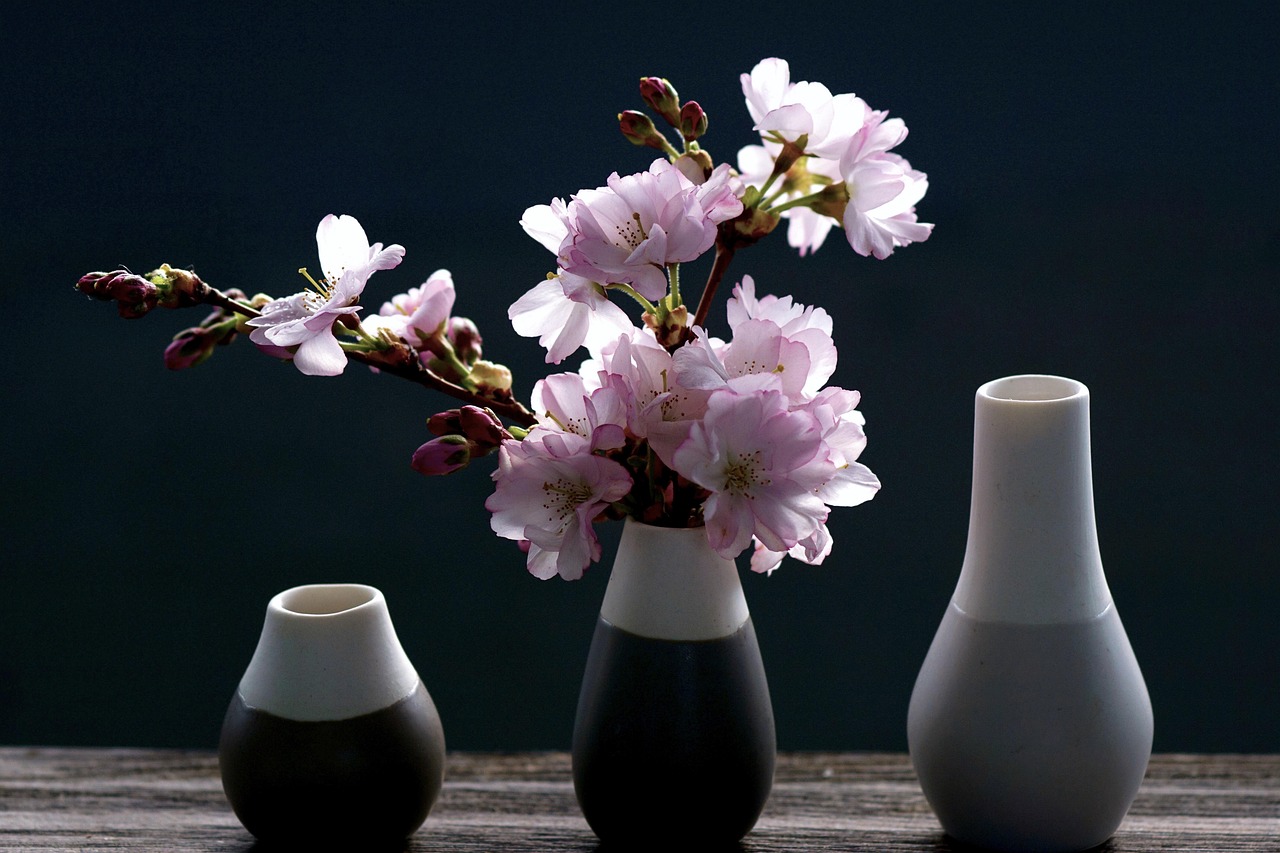Pruning Japanese cherry blossoms is essential for promoting healthy growth and ensuring vibrant displays. Proper timing and techniques enhance flower production while maintaining the tree’s natural shape. Understanding the best practices for pruning can lead to stunning, festive displays that celebrate the beauty of these iconic trees.
Japanese cherry blossoms, or sakura, are celebrated around the world for their breathtaking beauty and cultural significance. These trees bloom in spring, creating stunning landscapes filled with delicate pink and white flowers. The sight of cherry blossoms is often associated with renewal and hope, making them a popular choice for festivals and celebrations.

To maintain their health and enhance their aesthetic appeal, proper pruning is crucial. Pruning helps to remove dead or diseased branches, encourages new growth, and shapes the tree for optimal flower production. However, timing and technique are vital. Incorrect pruning can lead to reduced flowering and can even harm the tree.
Understanding Japanese Cherry Blossoms
Japanese cherry blossoms belong to the genus Prunus. They typically thrive in well-drained soil and require plenty of sunlight. These trees can grow to heights of 15 to 25 feet, depending on the variety. Here are some essential characteristics of Japanese cherry blossoms:
| Characteristic | Description |
|---|---|
| Height | 15 to 25 feet |
| Flower Color | Pink to white |
| Bloom Time | Spring (March to April) |
| Sunlight Requirements | Full sun (6+ hours daily) |
| Soil Type | Well-drained, loamy soil |
Each variety of cherry blossom has unique traits that can influence pruning practices. For instance, some types may produce more flowers on older wood, while others thrive with a more youthful structure. Understanding your specific variety will help you tailor your pruning methods effectively.

The Importance of Pruning
Pruning serves multiple purposes beyond simple aesthetics. It plays a crucial role in the overall health of the tree. Here are some key benefits of pruning Japanese cherry blossoms:
- Promotes Healthy Growth: Removing dead or diseased branches allows the tree to focus its energy on new growth.
- Enhances Flower Production: Pruning can encourage more blooms by allowing light and air to reach inner branches.
- Aids in Shaping: Regular pruning helps maintain a pleasing shape, making the tree more visually appealing.
- Prevents Overcrowding: Thinning out branches reduces competition for resources, leading to healthier foliage and blooms.
- Improves Air Circulation: Better air movement through the tree reduces the risk of fungal diseases.
While these benefits are evident, it is essential to approach pruning with care. An understanding of when and how to prune can significantly impact the success of your efforts.
When to Prune Japanese Cherry Blossoms
The best time to prune Japanese cherry blossoms is just after they finish blooming in late spring. This timing allows you to shape the tree while minimizing stress. Pruning during this period helps avoid cutting off flower buds for the next season.

Pruning should be avoided in late fall or winter when the tree is dormant. At this time, any cuts made can expose the tree to cold damage. Additionally, young trees may require different pruning strategies than mature ones, as they are still developing their structure.
Techniques for Pruning
Utilizing proper techniques is crucial for effective pruning. Here are some recommended practices:
- Use Clean Tools: Always use sharp, clean tools to make precise cuts and reduce the chances of infection.
- Cut at an Angle: Make cuts at a 45-degree angle to promote healing and reduce water accumulation.
- Avoid Topping: Never cut across the top of the tree. This can lead to weak growth and an unattractive appearance.
- Focus on Dead Wood: Begin by removing any dead, damaged, or diseased branches first.
- Thin Out Crowded Areas: Identify branches that are crossing or overcrowding and remove them for better light penetration.
After pruning, it is essential to monitor your tree’s health closely. Look for signs of stress or disease and adjust care as necessary. With the right approach, pruning can lead to a flourishing display of cherry blossoms that enhances any festive occasion.

The art of pruning Japanese cherry blossoms combines knowledge, technique, and patience. As you become more familiar with your trees and their needs, your ability to create stunning displays will only improve.
Common Mistakes to Avoid When Pruning
While pruning is essential for the health and beauty of Japanese cherry blossoms, several common mistakes can hinder your efforts. Recognizing these pitfalls can help you achieve the best results during the pruning process.
- Pruning at the Wrong Time: As mentioned earlier, pruning after blooming is crucial. Cutting too early or too late can damage the tree and reduce flowering.
- Removing Too Much: Over-pruning can stress the tree and lead to poor growth. Aim to remove no more than 20% of the tree’s foliage in a single year.
- Ignoring Tree Shape: When pruning, consider the tree’s natural shape. Maintain a balanced appearance rather than creating an unnatural form.
- Not Cleaning Tools: Using dirty tools can introduce pathogens to the tree. Always disinfect your pruning equipment between cuts, especially after cutting diseased wood.
- Failing to Assess Tree Health: Before pruning, take time to assess the overall health of your tree. This will help inform your pruning decisions.
Tools Needed for Pruning
Having the right tools is essential for successful pruning. Here are some basic tools that every gardener should have when working with Japanese cherry blossoms:
- Hand Pruners: Ideal for small branches and delicate cuts. Choose a pair that fits comfortably in your hand.
- Loppers: Best for thicker branches that are too large for hand pruners. Look for loppers with a long handle for added leverage.
- Saws: A pruning saw is necessary for larger branches. Ensure it has sharp teeth for clean cuts.
- Safety Gear: Protective gloves and goggles should always be worn to protect yourself from debris and sharp tools.
Post-Pruning Care
After you finish pruning, it’s essential to provide proper care to support recovery and promote healthy growth. Follow these steps:
- Watering: Ensure your tree receives adequate water, especially during dry periods. Newly pruned trees may need extra moisture as they recover.
- Mulching: Apply a layer of mulch around the base of the tree. This helps retain soil moisture and suppress weeds.
- Fertilizing: Use a balanced fertilizer in early spring to provide nutrients as the tree enters its growing season.
- Pest Management: Monitor for pests or diseases that might affect your tree after pruning. Early intervention is critical for maintaining health.
Encouraging Blooms Through Additional Care
In addition to pruning, other care practices can help ensure your cherry blossoms produce stunning blooms each year. Consider these strategies:
- Sunlight Exposure: Ensure your cherry blossom trees receive full sunlight for at least six hours each day. This will promote better flowering.
- Soil Quality: Test your soil for pH and nutrients. Japanese cherry blossoms prefer slightly acidic soil (pH 6.0 to 6.8).
- Regular Watering: Keep the soil consistently moist but not soggy, especially during the flowering period.
- Pesticides and Herbicides: If necessary, use organic pesticides or herbicides to manage unwanted plants or pests without harming the tree.
The Role of Weather in Pruning Success
The weather can significantly influence both the timing and effectiveness of your pruning efforts. Here are some weather-related factors to consider:
- Late Frosts: Be cautious if late frosts are predicted after blooming. Protect young buds from frost damage if necessary.
- Drought Conditions: In times of drought, avoid heavy pruning as it may stress the tree further. Instead, focus on light maintenance cuts.
- Rainy Seasons: Wet conditions can increase the risk of fungal infections post-pruning. Choose dry days for your pruning activities when possible.
Diversity of Cherry Blossom Varieties
Diverse varieties of Japanese cherry blossoms exist, each with unique characteristics and needs. Familiarizing yourself with different types can enhance your pruning strategy:
| Variety | Description | Pruning Focus |
|---|---|---|
| Sakura (Prunus serrulata) | The most common cherry blossom variety known for its stunning pink flowers. | Encourage an open center for better airflow. |
| Kanzan (Prunus serrulata ‘Kanzan’) | This variety features double pink blossoms and is often used in landscaping. | Focus on maintaining shape while removing dead wood. |
| Shirotae (Prunus serrulata ‘Shirotae’) | A white flowering cherry that blooms earlier than most varieties. | Lightly prune after flowering to shape the tree. |
| Amanogawa (Prunus serrulata ‘Amanogawa’) | This columnar variety is perfect for smaller spaces, with pale pink flowers. | Aim for vertical growth; prune minimally to maintain height. |
Understanding these different varieties will help you tailor your pruning methods to suit their specific growth habits and flowering patterns. By considering these aspects, you can enhance the beauty and health of your Japanese cherry blossoms, creating festive displays that capture attention and admiration during their blooming season.
Seasonal Care for Japanese Cherry Blossoms
To achieve stunning displays of Japanese cherry blossoms, seasonal care is vital. Each season presents unique challenges and opportunities for tree health and blooming potential. Understanding these seasonal needs allows you to provide the best care throughout the year.
Spring Care
Spring is the crucial time for cherry blossoms, as this is when they bloom. Here are key care practices to follow during the spring:
- Fertilization: Apply a balanced fertilizer early in the spring to give your trees a nutrient boost as they prepare to bloom.
- Watering: As temperatures rise, ensure your cherry trees receive consistent moisture. Deep watering encourages strong root development.
- Pest Monitoring: Keep an eye out for pests such as aphids or spider mites. Early detection and treatment can prevent significant damage.
- Pruning: Complete any necessary pruning immediately after blooms fade to promote healthy growth for the next season.
Summer Care
During summer, focus on maintaining tree health as they grow and develop foliage. The following practices are essential:
- Regular Watering: Ensure the trees receive enough water, especially during hot spells. Deep watering is better than frequent light watering.
- Mulching: Add mulch around the base of the tree to help retain moisture and suppress weeds. Maintain a mulch layer of 2-4 inches.
- Pest Control: Continue monitoring for pests. Use organic methods to manage infestations while being mindful of beneficial insects.
- Weed Management: Remove weeds that compete for nutrients and water. Hand-pulling or using mulch can help keep weeds at bay.
Fall Care
As fall approaches, it’s time to prepare your cherry blossoms for winter. Follow these essential steps:
- Final Watering: Ensure your trees are well-watered before winter dormancy. This helps them survive cold weather.
- Leaf Removal: Rake up fallen leaves to reduce the risk of fungal diseases and pests overwintering near the tree.
- Fertilization: Consider applying a slow-release fertilizer in late fall to provide nutrients during dormancy.
- Protection Against Frost: In colder climates, protect young trees with burlap or mulch around the base to insulate their roots from freezing temperatures.
Winter Care
Winter care is crucial for protecting your cherry blossoms from harsh weather conditions. Here are some practices to consider:
- Inspect for Damage: Regularly check your trees for signs of damage or disease. Early intervention can save a tree’s health.
- Avoid Over-Pruning: Winter is not the ideal time for pruning, as it can stress the tree. If necessary, only remove dead or severely damaged branches.
- Watering Needs: If there is little rainfall, provide water during mild winter days when the ground is not frozen.
- Snow Removal: If heavy snow accumulates on branches, gently brush it off to prevent breakage.
The Impact of Soil Quality on Cherry Blossoms
The quality of soil significantly influences the health and blooming of Japanese cherry blossoms. Here are some important factors regarding soil:
Soil Composition
A well-balanced soil composition is crucial for cherry blossom health. Ideal soil typically contains:
- Organic Matter: Compost or well-rotted manure improves soil structure and provides essential nutrients.
- Sandy Loam: This type of soil allows for good drainage while retaining moisture. Cherry blossoms prefer slightly acidic to neutral pH levels.
- Nutrients: Key nutrients such as nitrogen, phosphorus, and potassium should be present in adequate amounts for healthy growth and blooming.
Soil Testing
Regular soil testing can help determine its composition and nutrient levels. Here’s how to test your soil effectively:
- Collect Samples: Take samples from various locations around the tree’s root zone.
- Send for Analysis: Use a local extension office or commercial lab to analyze the samples for pH and nutrient composition.
- Follow Recommendations: Based on the results, amend your soil accordingly with fertilizers or organic matter to improve quality.
Enhancing Soil Quality
If your soil lacks essential nutrients or has poor drainage, consider these strategies to enhance its quality:
- Add Organic Matter: Regularly incorporate compost or mulch into the soil to improve fertility and structure.
- Create Raised Beds: For areas with poor drainage, consider creating raised beds to promote better water movement and root growth.
- Aerate Soil: Aerating compacted soil can improve air circulation and water infiltration, promoting healthier root systems.
The Aesthetic Value of Cherry Blossoms in Landscaping
Japanese cherry blossoms are not only famous for their beauty but also their versatility in landscaping design. Here are some ideas on how to incorporate them into various settings:
Cultural Significance
The cultural significance of cherry blossoms enhances their value in landscaping. They symbolize renewal and beauty in many cultures, making them ideal for parks and public gardens. Their fleeting blooms remind us of life’s transience, adding depth to any landscape design.
<h3 Residential Gardens
In residential gardens, cherry blossoms provide striking visuals throughout the seasons. Here are some design tips:
- Create Focal Points: Position cherry blossom trees as focal points in your garden to draw attention and create stunning displays during blooming seasons.
- Add Contrast: Pair cherry blossoms with evergreens or dark foliage plants for striking contrasts that enhance their colors.
- Cascade Planting: Plant smaller flowering plants beneath cherry trees to create layers of color as they bloom at different times.
<h3 Public Spaces
The use of cherry blossoms in public spaces can enhance community enjoyment. Consider these aspects:
- Parks and Boulevards: Planting rows of cherry trees along walkways provides breathtaking avenues during springtime festivals.
- Cultural Events: Incorporate cherry blossom trees in event planning for festivals that celebrate their beauty through art, music, and food.
- Sustainability Practices: Encourage sustainable landscaping practices by using native plants alongside cherry trees to support local ecology.
The aesthetic value of Japanese cherry blossoms extends beyond mere decoration; they enrich our environments and offer a deeper connection to nature’s beauty. By understanding their needs and incorporating them thoughtfully into landscapes, you can create vibrant spaces that celebrate this iconic tree’s charm year-round.
Enhancing Community Engagement with Cherry Blossoms
Japanese cherry blossoms have a unique ability to engage communities. Their beauty and cultural significance create opportunities for gatherings and celebrations. Parks and public spaces adorned with these trees often become focal points for community activities.
Cherry Blossom Festivals
Many cities around the world hold cherry blossom festivals, celebrating the arrival of spring. These events often include:
- Cultural Performances: Traditional music, dance, and art exhibitions showcase the cultural heritage associated with cherry blossoms.
- Food Stalls: Local vendors offer delicious food and drinks, creating a festive atmosphere for families and friends.
- Community Involvement: Local schools and organizations often participate by hosting events, providing a platform for community engagement.
These festivals not only celebrate the beauty of cherry blossoms but also foster a sense of community pride and togetherness. They bring people together, allowing them to appreciate the natural beauty while enjoying cultural activities.
Educational Opportunities
Cherry blossoms also offer educational opportunities for schools and local organizations. Programs can include:
- Workshops: Gardening workshops teach participants about the care of cherry trees, including pruning techniques and seasonal care.
- Nature Walks: Guided tours in parks can educate visitors about the ecological significance of cherry blossoms and their role in local wildlife habitats.
- Art Classes: Artists can conduct classes inspired by the beauty of cherry blossoms, encouraging creativity and appreciation for nature.
Such educational initiatives can help instill an appreciation for gardening, nature conservation, and cultural traditions among participants, ensuring that the legacy of cherry blossoms lives on through future generations.
Pruning for Sustainability
As environmental concerns grow, incorporating sustainable practices into the care of cherry blossoms becomes increasingly important. Here are some strategies to promote sustainability:
- Organic Care: Utilize organic fertilizers and pest control methods to minimize chemical use, promoting a healthier ecosystem.
- Native Plant Integration: Planting native species alongside cherry trees supports biodiversity and helps attract beneficial insects.
- Water Conservation: Implementing drip irrigation systems can reduce water waste while ensuring that cherry trees receive adequate moisture.
Sustainable gardening practices not only benefit the environment but also enhance the overall health of cherry blossom trees. By maintaining a balanced ecosystem, these efforts contribute to the long-term survival of these iconic trees.
Final Thoughts
Pruning and caring for Japanese cherry blossoms is an art that requires knowledge, patience, and dedication. Understanding the unique needs of these trees allows gardeners to create stunning displays that enhance both private and public landscapes. The seasonal care practices outlined throughout this article—combined with proper pruning techniques—result in healthier trees that produce magnificent blooms year after year.
The cultural significance of cherry blossoms adds depth to their beauty. By fostering community engagement through festivals and educational programs, we can ensure that their legacy continues to flourish. Moreover, embracing sustainable practices not only benefits the environment but also strengthens the connection between people and nature.
In conclusion, whether you are a seasoned gardener or a novice, nurturing Japanese cherry blossoms provides an opportunity to connect with nature and celebrate beauty. Each blossom represents a fleeting moment in time, reminding us to cherish the beauty around us. By applying the knowledge shared in this article, you can contribute to creating vibrant displays that captivate hearts and minds during the enchanting spring season.
